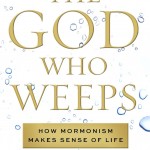This review of Lawrence Cunningham’s The Seven Deadly Sins: A Visitor’s Guide is part of the Patheos Book Club, and my copy was free.
My college debate group had many aphorisms, one of which was, “All sins are pride.” So I read The Seven Deadly Sins: A Visitor’s Guide waiting to see what Cunningham had to say about my sin. I didn’t expect to be caught by his meditation on anger/wrath, which I’ve always thought of as the most boring sin.
Coming from a background of stoicism, I just see anger as the simplest to avoid. It’s always been pretty easy for me to retreat into indifference and impassivity when someone or something ticks me off. To lash out just lets them score another point off me; not only did they upset me, but they made me lose control and embarrass myself. Because anger is undisciplined, I’m prone to see it as low-class. (See why I’m prone to think all sins are pride?).
Anger is the only one of the sins that seems totally public, easy for other people to catch you out on. But I was thinking about anger a bit narrowly. In Peter Pan, the narrator informs us that fairies like Tinkerbell can feel only one emotion at a time and it consumes them utterly. But most people aren’t like that. Feelings take a while to dissipate, and sometimes even we can’t tell when we’ve finally let go of our anger.
I remember in college that there were several fights I had to resolve by explaining to one of the parties that the other person wasn’t still mad. There just isn’t a clear way we show other people we’ve forgiven them and ourselves, so we go by guesswork and projection. (All the more reason to wish we had a more ritualized tradition of amends-making). I don’t usually get visibly angry or remain that way for very long, so my friends usually move on from a spat quickly. But I’m not sure that I do.
When I was at the CFAR minicamp this summer, one workshop was focused on noticing anger and moving away from it. Our anger can get ahead of us, apparent to our interlocutor before we’ve acknowledged it. The easiest ‘tell’ is just being on the wrong side of this exchange:
Stop shouting!
I’M NOT SHOUTING!
But, ideally, we’d like to notice and deal with our anger several steps further back. Before we’re up to the raised voices-stage, we’ve probably already hit the listening uncharitably, arguing in bad faith, and other nasty steps. Better to head them off at the pass. In that class, we focused on noticing physiological signals of the fight-or-flight response — remember what a tensed neck/raised shoulders/etc feels like, and remember to calm down and reengage next time you notice that signal.
I think I may have hit on a helpful tell (for me anyway) for slow-burning anger and resentment. I imagine stepping off the bus in C.S. Lewis’s allegory The Great Divorce and finding that my antagonist is the person who’s come to meet me and lead me onward and upward into Heaven. If my first reaction is a flinch (“What them?” or “I can’t believe they’re already here” or “Must I now allow this man to hold dominion over me?”), I’m probably still angry.
Mind you, I don’t know exactly what to do with that knowledge, but forewarned is forearmed, I guess.













